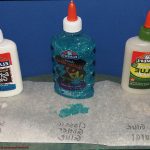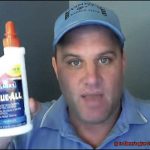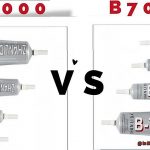Are you an avid crafter or DIY enthusiast? Then chances are, you’ve used Elmer’s craft glue in one of your projects. This nifty adhesive is a go-to for many due to its ease of use and versatility. But, have you ever wondered if Elmer’s craft glue falls under the PVA category?
Polyvinyl acetate (PVA) is a white liquid emulsion that creates a strong bond on various materials like wood, paper, and fabric. It’s a popular choice among artists, carpenters, and DIYers worldwide. However, not all white glues can be classified as PVA. So the question remains- is Elmer’s craft glue considered PVA?
In this blog post, let’s take a deep dive into the world of Elmer’s craft glue- its components and whether it belongs to the PVA family. We’ll also explore the science behind PVA and how its properties relate to Elmer’s craft glue. Plus, we’ll give you some insight into why this adhesive has become a staple in many crafter’s toolkits.
If you’re curious about the connection between Elmer’s craft glue and PVA, then keep reading. Let us break it down for you.
What is Elmer’s Craft Glue?
Contents
Are you an avid crafter or artist seeking the perfect adhesive to bring your ideas to life? Elmer’s Craft Glue is the ideal solution for all your creative projects.
A Time-Tested PVA Glue
Elmer’s Craft Glue is a white, non-toxic glue that dries clear, making it an excellent choice for a variety of applications. This PVA glue has been trusted by crafters for over 70 years, and it continues to be the go-to adhesive for many.
Versatile Application
One of the most attractive features of Elmer’s Craft Glue is its versatility. You can use it on various surfaces like paper, cardboard, fabric, and wood, making it an excellent option for a diverse range of crafting projects. From scrapbooking to card making to DIY home decor, Elmer’s Craft Glue can do it all.
Strong Hold
Elmer’s Craft Glue is known for its robust bonding properties. It provides a reliable hold that can withstand both lightweight and heavy-duty applications. Whether you’re creating a small DIY project or working on something more significant, you can trust that your project will stay together with Elmer’s Craft Glue.
Easy to Use
The glue comes in a squeeze bottle with a precision tip, allowing for easy and precise application. You don’t have to worry about making a mess while using this glue. It also dries quickly, meaning you can move on to the next step of your project without having to wait around for the glue to dry.
Affordability
Elmer’s Craft Glue is an affordable option that provides excellent value for its price. It is available in clear, white, and glitter formulations, allowing you to choose the perfect glue for your project without breaking the bank.
What is PVA Glue?
Look no further than PVA glue. This versatile and reliable crafting essential is a synthetic polymer made from vinyl acetate monomer and various additives such as plasticizers, stabilizers, and thickeners.
PVA glue’s non-toxic nature, strong adhesive properties, and versatility make it a popular choice in the crafting industry. Whether you’re working with paper, cardboard, wood, fabric, or even some plastics, PVA glue can get the job done. Its white, milky appearance dries clear, so you don’t have to worry about any unsightly residue.
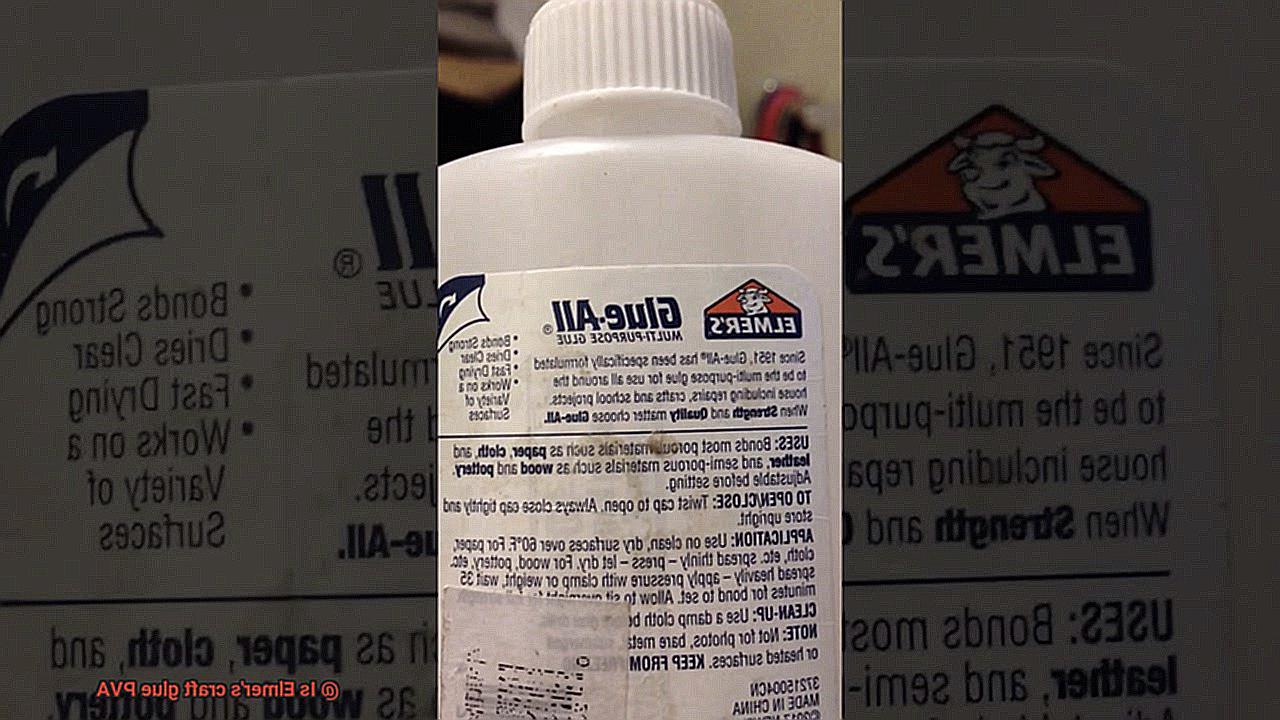
One of the best things about PVA glue is its ability to be thinned with water to create a more fluid consistency or mixed with other materials such as glitter or paint to create unique effects. It can even be used as a sealant or varnish when mixed with water and applied over finished projects.
Another significant benefit of PVA glue is its water-resistant properties when dry. This makes it ideal for use in projects that may come into contact with moisture or require frequent washing.
In summary, PVA glue is the ultimate solution for crafters and artists seeking a versatile and reliable adhesive that provides a strong hold and is easy to use. Here are some reasons why:
- Non-toxic nature
- Strong adhesive properties
- Versatility on different surfaces
- Dries clear
- Water-resistant when dry
Is Elmer’s Craft Glue PVA?
Look no further than Elmer’s Craft Glue. This popular white glue is not only easy to use and clean up, but it also contains the versatile adhesive known as PVA.
Polyvinyl acetate, or PVA for short, is a common ingredient in woodworking, paper mache, and other crafts. It’s no wonder that Elmer’s Craft Glue is a favorite among crafters, as it offers the same strong bonding properties and versatility as other PVA-based glues.
But that’s not all – Elmer’s Craft Glue boasts many other benefits that make it stand out from the crowd. It’s non-toxic, so you can feel safe using it around children or pets. And when you’re finished with your project, simply clean up with soap and water.
One of the best features of Elmer’s Craft Glue is its ability to dry clear. This makes it perfect for use in projects where you don’t want the glue to be visible. Use it for scrapbooking, card-making, or any other paper crafts where you want the focus to be on your design, not the adhesive.
Benefits of Using Elmer’s Craft Glue
Say hello to Elmer’s Craft Glue. This versatile glue offers a plethora of benefits that make it an ideal choice for all your crafting needs.
First and foremost, Elmer’s Craft Glue is a PVA glue, which means it is water-based and non-toxic. You can enjoy your crafting sessions without worrying about the safety of your children or pets, and the easy clean-up properties make it a breeze to use.
But the benefits don’t stop there – Elmer’s Craft Glue can be used on a variety of surfaces, from paper to wood, making it an essential tool for all your craft projects. Whether you’re creating a handmade card or building a birdhouse, this glue is up for the task.
What’s more, Elmer’s Craft Glue dries clear, ensuring your finished product looks neat and professional. And thanks to its strong hold once dry, you can trust that your materials will stay securely bonded together. It’s perfect for creating durable jewelry or repairing broken items.
Different Types of PVA Glues
PVA glue, also known as Polyvinyl Acetate glue, is a popular adhesive used in crafting projects. There are different types of PVA glues available in the market today, each with its unique features and properties. Let’s dive deeper and explore the various types of PVA glues and their distinct characteristics.
White Glue
White glue or school glue is the most common type of PVA glue. It is non-toxic, water-soluble, and dries clear, making it perfect for children’s projects and other crafts that require a non-toxic adhesive. White glue can be used on various surfaces such as paper, cardboard, wood, and fabric.
Wood Glue
Wood glue is specifically designed for bonding wood together and has a stronger hold than regular PVA glues. It creates a strong bond that can withstand the stresses and strains of woodworking projects. Wood glue dries clear and can be sanded or painted over once it has dried.
Fabric Glue
Fabric glue is designed for use on fabrics and can withstand washing without losing its bond. This type of glue creates a permanent bond on fabrics without damaging the material. It is perfect for attaching patches or embellishments to clothing or creating fabric crafts.
Clear Glue
Clear glue dries transparent and is suitable for attaching materials such as plastic, glass, and metal. It is perfect for projects where a clear finish is desired. Clear glue can also be used in various art projects.
School Glue
School glue is a weaker version of white glue that is specifically formulated for use in classrooms. It has a lower viscosity than regular white glue, making it easier to apply. School glue is ideal for younger children’s projects or those who are just starting with crafts.
Paper Glue
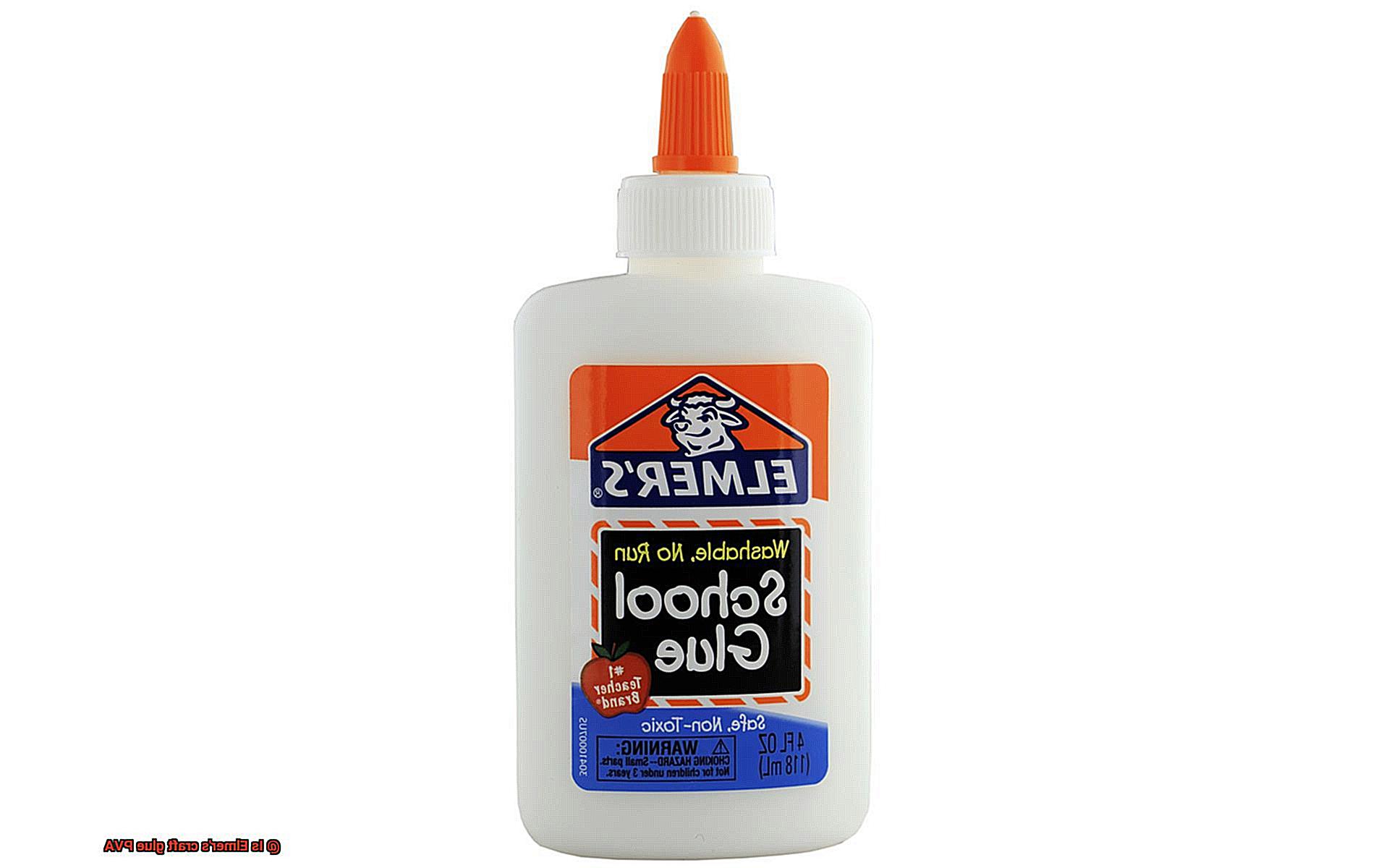
Paper glue like Tombow Mono Multi Liquid Glue creates a strong bond on paper without wrinkling or damaging the surface. This type of glue is perfect for scrapbooking, card making, and other paper crafts.
How to Use Elmer’s Craft Glue
This versatile adhesive is perfect for a wide range of crafting needs and works well on various surfaces like paper, cardboard, fabric, and wood. Whether you’re making cards, scrapbooking, or creating intricate paper designs, Elmer’s Craft Glue can help your project stick together. Here are some tips on how to use Elmer’s Craft Glue for your next project:
Choose the right surface
Before you start gluing, make sure you have chosen the right surface to work with. Elmer’s Craft Glue works best on porous surfaces like paper and cardboard. It can also be used on fabric and wood, but may require a bit more time to dry.
Prep your materials
Preparation is key when it comes to using any adhesive. Make sure that the surfaces you will be gluing are clean and dry. Any dirt or moisture can affect the adhesive’s strength.
Apply the glue
Squeeze a small amount of Elmer’s Craft Glue onto one of the surfaces you want to join. You can use a brush or a spreader to apply the glue evenly. Be careful not to over-apply the glue as this can cause it to seep out of the edges.
Join the surfaces
Once you have applied the glue, press the two surfaces together firmly and hold them in place for a few seconds to allow the glue to bond. Avoid moving the surfaces around too much as this can disrupt the bonding process.
Let it dry
After joining the surfaces, leave them to dry for at least 24 hours before handling or moving them. The drying time may vary depending on the humidity and temperature of your environment. Be patient and wait until the glue has completely dried before moving on to the next step.
Get creative
Once your glue is dry, it’s time to get creative. You can add embellishments or other decorations to your craft project. Elmer’s Craft Glue is versatile enough to work with a wide range of materials, so let your imagination run wild.
Cleaning Up After Using Elmer’s Craft Glue
Crafting with Elmer’s Craft Glue is a rewarding experience, but it’s no secret that cleaning up the aftermath can be challenging. However, with the right techniques and tools, the cleanup process can be a breeze. Here’s how to clean up after using Elmer’s Craft Glue like a pro.
First and foremost, it’s essential to clean up any excess glue as soon as possible. The longer you wait, the harder it becomes to remove. So, act fast and wipe away any glue residue before it dries.
One of the most effective methods for cleaning up Elmer’s Craft Glue is to use a damp cloth or paper towel. This simple yet practical solution helps gently remove excess glue from surfaces without damaging them. For small areas, moistened cotton swabs work wonders.
For larger spills or messes, a mixture of warm water and vinegar is your best bet. Vinegar’s acidity dissolves the glue, making it easier to wipe away with a damp cloth or sponge. Mix equal parts water and vinegar, apply to the affected area, and let it sit for a few minutes before wiping away.
It’s crucial to note that Elmer’s Craft Glue is water-soluble, so avoid using solvents such as acetone or nail polish remover. These harsh chemicals can damage surfaces and pose potential health risks if ingested.
To summarize, here are some tips for cleaning up after using Elmer’s Craft Glue:
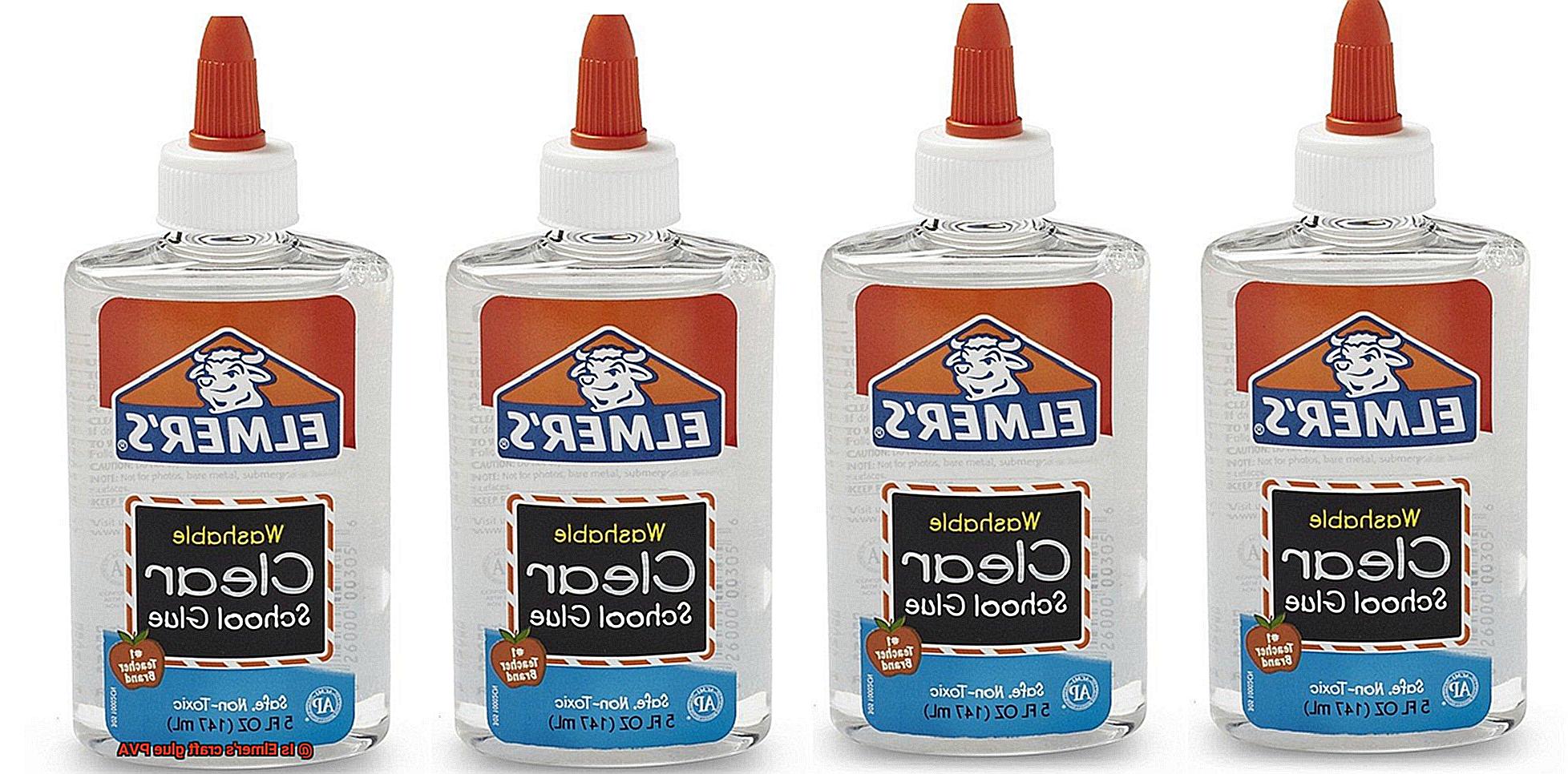
- Clean up excess glue as soon as possible
- Use a damp cloth or paper towel for small areas
- Try moistened cotton swabs for hard-to-reach spots
- Use warm water and vinegar for larger spills or messes
- Avoid using solvents such as acetone or nail polish remover
zumPCy2wuKg” >
Conclusion
In summary, Elmer’s Craft Glue has been a trusted adhesive for over seven decades, earning its reputation as a versatile and dependable option for crafters of all levels. With its strong bonding properties and ease of use, this PVA glue is a popular choice among artists, carpenters, and DIY enthusiasts worldwide.
Whether you’re working with paper, cardboard, fabric, or wood, Elmer’s Craft Glue can handle the job with ease. Available in clear, white, and glitter formulations at an affordable price point, it’s easy to see why this glue is accessible to all.
Containing polyvinyl acetate (PVA), Elmer’s Craft Glue offers the same sturdy bonding properties as other PVA-based glues on the market. Plus, it’s non-toxic and dries clear for a professional finish every time.
While cleaning up after using glue can be daunting at times, warm water or vinegar can help remove excess without damaging surfaces.


